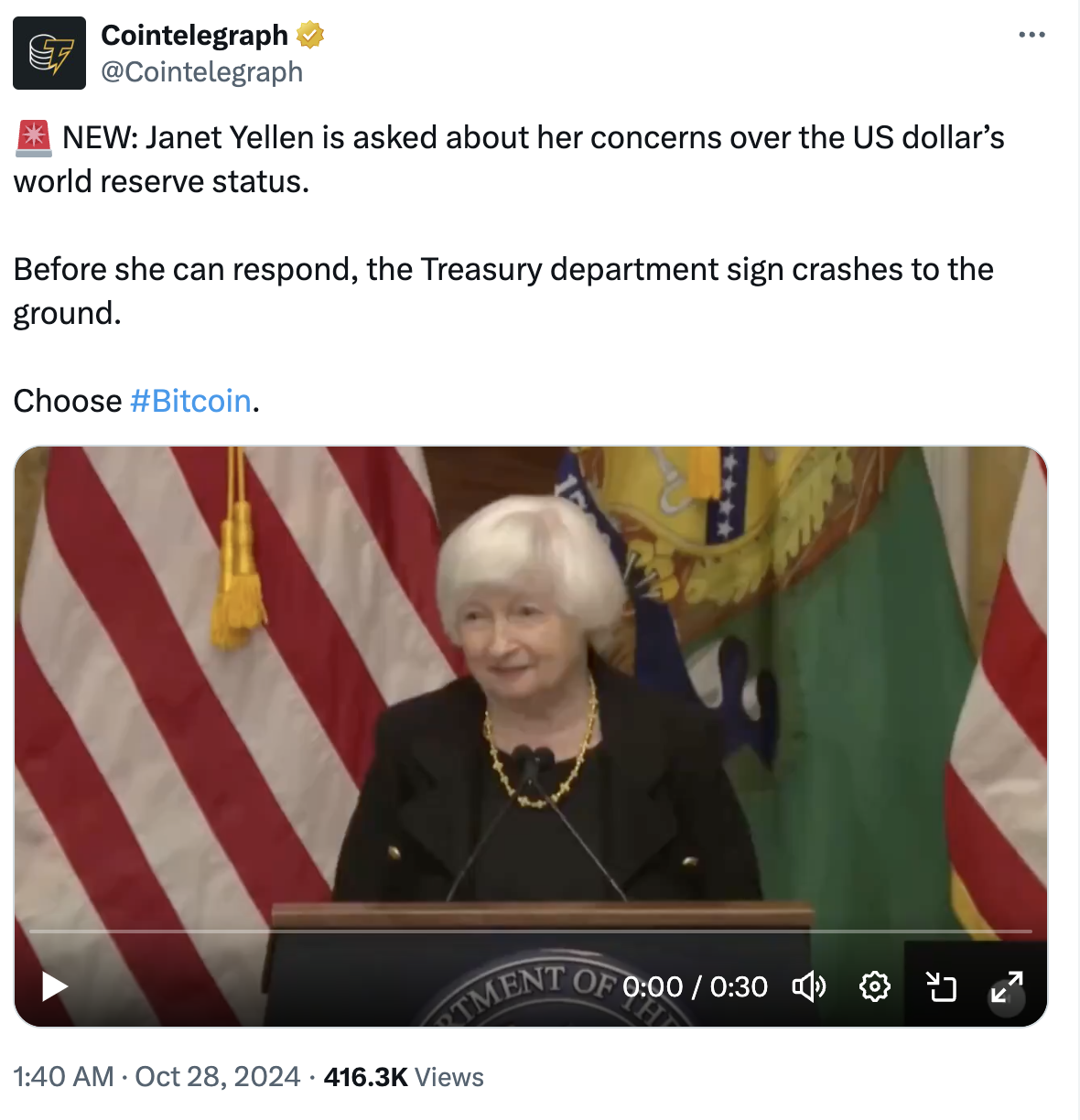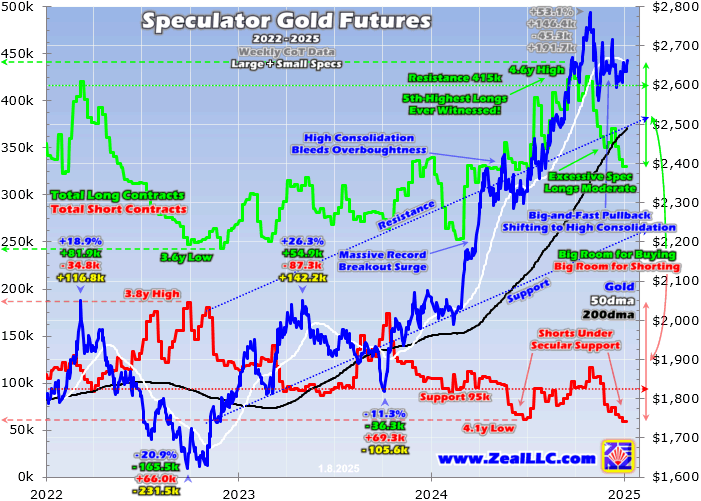The universe seems to know the dollar is in trouble.
During a recent news conference, a reporter asked Treasury Secretary Janet Yellen, “How concerned are you about the potential impact of the dollar’s status as the world reserve currency?”
Before the reporter could finish the question, the Treasury Department seal fell off the podium and hit the floor with a loud series of thuds.
It was an eerily symbolic moment.
As one commenter on X put it, “Even the Treasury sign is giving up.”
Danger for the Dollar
While the dollar isn’t in any immediate danger of losing its status as the reserve currency, its dominance is slowly bleeding away.
Dollar reserves globally have dropped by 14 percent since 2002, and de-dollarization accelerated after the U.S. and her Western allies aggressively sanctioned Russia.
Two primary U.S. policies are undercutting the dollar.
First, the weaponization of the dollar is making many countries wary of holding them.
In simple terms, the U.S. and its allies have used the dollar as a hammer in attempts to bend other countries to its foreign policy will. This is most evident in the aggressive sanctioning of Russia, including locking the country out of the SWIFT payment system in the wake of its invasion of Ukraine.
As an Atlantic Council report put it,
“In recent years, and especially since Russia’s invasion of Ukraine and the Group of Seven (G7)’s subsequent escalation in the use of financial sanctions, some countries have been signaling their intention to diversify away from dollars.”
Whether you think the sanctions were justified or not, it’s important to remember that other countries are watching how the U.S. behaves. They realize that dependence on dollars makes them vulnerable to U.S. meddling, and this is one of the reasons many countries are trying to diversify away from USD.
Think about it — if you are concerned that the U.S. could pull the “dollar rug” out from under you, why not get that rug out of your living room before that can happen?
This appears to be what is slowly happening.
According to a 2023 Invesco survey, a “substantial percentage” of central banks expressed concern about how the U.S. and its allies froze nearly half of Russia’s $650 billion gold and forex reserves.
Second, U.S. fiscal irresponsibility is eroding global confidence in the dollar.
After all, if the U.S. is going to keep printing money and devaluing the dollar, why would you want to hold them? Furthermore, America’s incessant borrowing and spending is undermining its credibility as a good credit risk.
The Biden administration just ran the third-largest budget deficit in history.
This is the kind of borrowing and spending one would expect during an economic crisis. The only bigger annual budget deficits both occurred during the COVID lockdown era. And yet here we are, in what is supposed to be a “robust” economy, with a crisis-like budget deficit.
Meanwhile, Uncle Sam paid $1.13 trillion in interest expense in fiscal 2023. It was the first time interest expense has ever eclipsed $1 trillion. The federal government paid more for interest expenses than it did for national defense or Medicare!
This doesn’t exactly scream “trustworthy borrower.”
If the United States continues to borrow and spend at this irresponsible level, eventually countries will stop lending it money.
We’re already seeing lagging demand in the Treasury market as evidenced by increasing yields despite the recent Federal Reserve rate cut.
Ramifications for the U.S. Economy
The U.S. has benefited tremendously from the privilege of issuing the reserve currency. Because the world needs dollars, the U.S. has been able to print money with minimal consequences. Global demand for dollars soaks up a lot of the excess. This has allowed the federal government to borrow and spend at a far higher rate than it otherwise could have. This supports the massive welfare and warfare states.
A de-dollarization of the world economy would cause the value of the U.S. currency to crash and likely spark a currency crisis. This would further erode the purchasing power of the dollar and drive prices even higher. It could even lead to hyperinflation.
Even a modest decrease in the use of the dollar could begin to undermine the strength of the currency. This could lead to a downward spiral with dollar weakness further undermining confidence in the greenback.
The dollar is in trouble. You know it. I know it. And apparently, the universe knows it.
Read the full article here












Leave a Reply